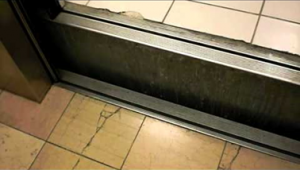 December 2018
December 2018
Two competing technologies exist for elevator motors. The older technology may be more reliable with the newer technology being safer.
Single-speed elevators date back to the 1950s and are more prevalent in older buildings. They travel at one speed and are more likely to stop a few inches above or below floor level when the brake is activated. This creates a trip-and-fall hazard and, while no negligence is involved, trip-and-fall incidents which can lead to insurance claims and lawsuits.
The cost of modernizing or upgrading single-speed elevators to eliminate this hazard is high – between $100,000 and $150,000 – and takes an elevator out of service for up to two months. Modernization to eliminate the trip-and-fall hazard may come at the expense of reliability. Single-speed elevators are relatively simple and rarely break down. They have an anticipated 30-year lifespan although many have been in operation for nearly 50 years.
Technical Standards & Safety Authority (TSSA) regulates elevators in Ontario. They estimate there are up to 1,200 single-speed elevators in Ontario. Canadian Elevator Contractors Association (CECA) estimates that about 50 per cent of these elevators have been modernized.



